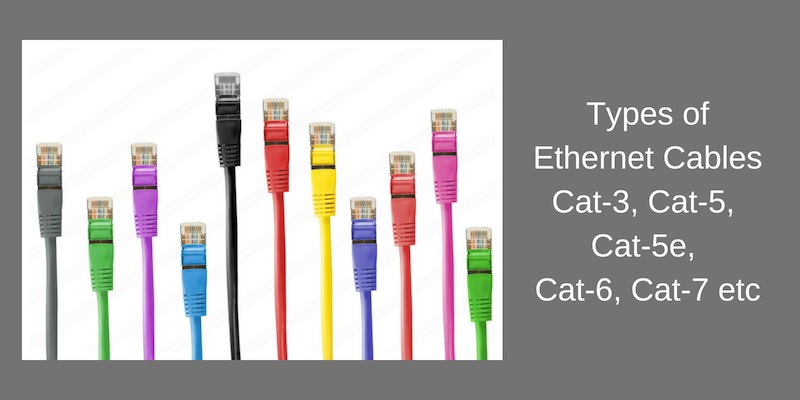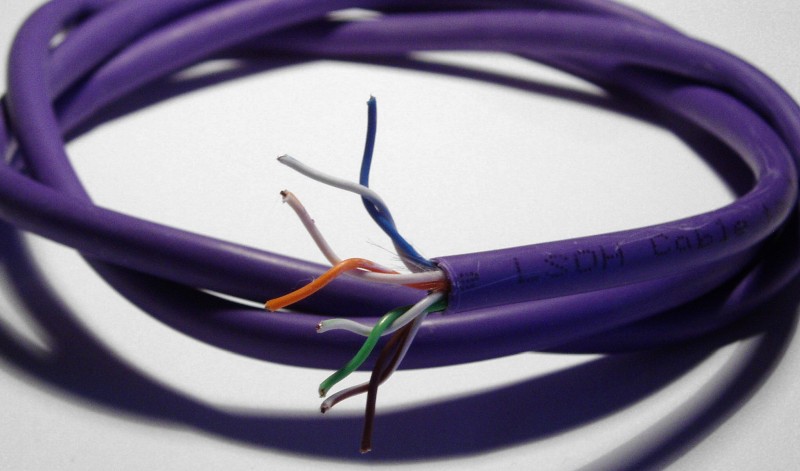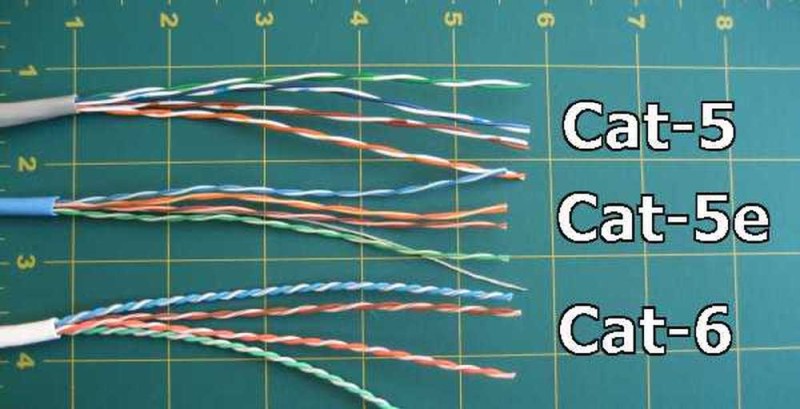If you have studied the OSI model with its 7 Layers that describe communication on computer network systems, you should know that the Ethernet standard lies in Layer 1 (Physical) and Layer 2 (Data-Link) of the OSI model.

In this article we will focus on the physical (Layer 1) part of Ethernet, which mainly focuses on the wired physical medium (cabling) that is used to transport Ethernet frames in a network.
Ethernet cables connect devices to computer networks, the “heart” of which is usually an Ethernet switch which has several interface ports for “plugging-in” the cables.
Most of these Ethernet cables feature the standard RJ45 connector for plugging-in to a switch. However, Ethernet communication can be implemented also using Fiber-optic cabling which uses different types of connectors.
Moreover, there are different types of Ethernet cables with varying bandwidths, speeds and types of construction. In this article we will discuss the “copper-made” cables which are the most popular ones in computer networks.
The cables have labels indicating the standard used for manufacturing, ranging from category (cat) 3 to 7.
Ethernet cables consist of several (usually 8) smaller wires (inside the main cable) which are separated in Twisted-pairs. This setup helps in cancelling-out electromagnetic interference between wires, thus allowing signals to travel longer distances inside the wires.
Without the right cable (and of course without the right type of switch), you may experience slower speeds in the network between devices.
Let’s now describe each Category of Ethernet Cables with their characteristics:
Comparison Table
| Cat-3 | Cat-5 | Cat-5e | Cat-6 | Cat-6a | Cat-7 | |
| Max Length | 100 m | 100 m | 100 m | 100 m
(55 m for 10Gbps) |
100 m | 100 m |
| Max Speed | 10 Mbps | 100 Mbps | 1 Gbps | 10 Gbps | 10 Gbps | >10 Gbps |
| Frequency Bandwidth | 16 MHz | 100 MHz | 100 MHz | 250 MHz | 500 MHz | 600 MHz |
| Shielded / Unshielded | Unshielded | Unshielded | Unshielded | Shielded or Unshielded | Shielded | Shielded |
1) Cat 3
One of the oldest Ethernet cabling standards is category (cat) 3 (TIA/EIA-568-B). These cables allowed 10 Mbps transmission speeds with 16 MHz max bandwidth.
Cat 3 ethernet cables feature unshielded twisted pair (UTP) cabling. With UTP cables, manufacturers twist insulated copper wires together inside a polyethylene jacket. Compared to shielded ethernet cables, UTP cables tend to include more crosstalk.
Network connections commonly featured category 3 ethernet cables until the early 1990s, when category 5 cables replaced cat 3. While some older telephone systems may still use cat 3 cables, they have mostly become obsolete in the networking industry.
2) Cat 5
Cat 5 cables increased the bandwidth of Ethernet connections up to 100 MHz and offered transmission speeds up to 100 Mbps. With Cat 5 ethernet cables, users could access 100BASE-TX ethernet systems, referred to as fast ethernet.
As with the category 3 cables, cat 5 cables still feature crosstalk and interference, due to the UTP design. These cables include four pairs of twisted wires (for a total of 8 wires).
While cat 5 cables primarily provide connections for Ethernet applications, these cables also provide solutions for carrying other data signals, such as video and telephone. In fact, a single cat 5 cable can carry two standard phone lines and a 100BASE-TX connection.
3) Cat 5e
In 2001, the category 5e standard replaced category 5. The letter “e” in the name stands for enhanced.
The cabling still uses unshielded twisted pairs. There are no physical differences between cat 5 and cat 5e cables. However, stricter standards in manufacturing Cat5e cables help minimize crosstalk and allow higher data transmissions than Cat5.

Cat 5e cables also utilize two sets of twisted pairs of wires, resulting in faster speeds. While cat 5e ethernet cable still features 100 MHz bandwidth, these cables allow speeds up to 1000 Mbps (1 Gbps).
While several additional standards have come after cat 5e, these cables remain in production. In fact, due to the lower cost of production and support for gigabit ethernet, cat 5e cables are the most used for network applications throughout the world.
4) Cat 6
Cat 6 ethernet cables helped address issues related to interference and crosstalk. These cables use thinner wires and superior insulation, resulting in a better signal-to-noise ratio.
With these features, cat 6 cables provide a more effective option for adding cable in areas with more electromagnetic interference, such as a crowded server room.
Thanks to the superior design, cat 6 provides improved bandwidth. These cables have a max bandwidth of 250 MHz and max transmission speeds up to 1000 Mbps (1 Gbps) at the 100m range. However, 10Gbps can be achieved in Cat6 in smaller distances (up to 55m).
Some cat 6 cables include shielding while others remain unshielded. With shielding, these cables can provide transmission speeds up to 10 Gbps, but only for short distances as we said above.

5) Cat 6a
Category 6a ethernet cables improve the design of the cat 6 cables. The letter “a” stands for augmented. Unlike cat 6 cables, all cat 6a cables feature shielded cabling for reduced interference.
With the enhancements to the design specifications, cat 6a cables maintain higher transmission speeds and 500 MHz max bandwidth, allowing speeds up to 10000 Mbps (10 Gbps) across longer cables.
While these cables provide faster speeds, the design makes them less flexible. To eliminate crosstalk, these cables feature thicker sheathing, making the cables stiffer and more difficult to work.
6) Cat 7
One of the latest developments is Cat 7 Ethernet cables. Also called class F channel cables, these cables include stricter standards compared to previous categories. The individual wire pairs now include their own shielding, in addition to the outer shielding
With these cables, you get 600 MHz max bandwidth and 10000 Mbps (10 Gbps) transmission speeds. However, by almost completely getting rid of crosstalk, cat 7 ethernet cables offer even greater reliability for 10 Gbps Ethernet connections.
With connections less than 15 meters, cat 7 can support transmission speeds up to 100 Gbps. While the industry has released several new standards since cat 7, these cables are currently the top of the line option for demanding networking applications.